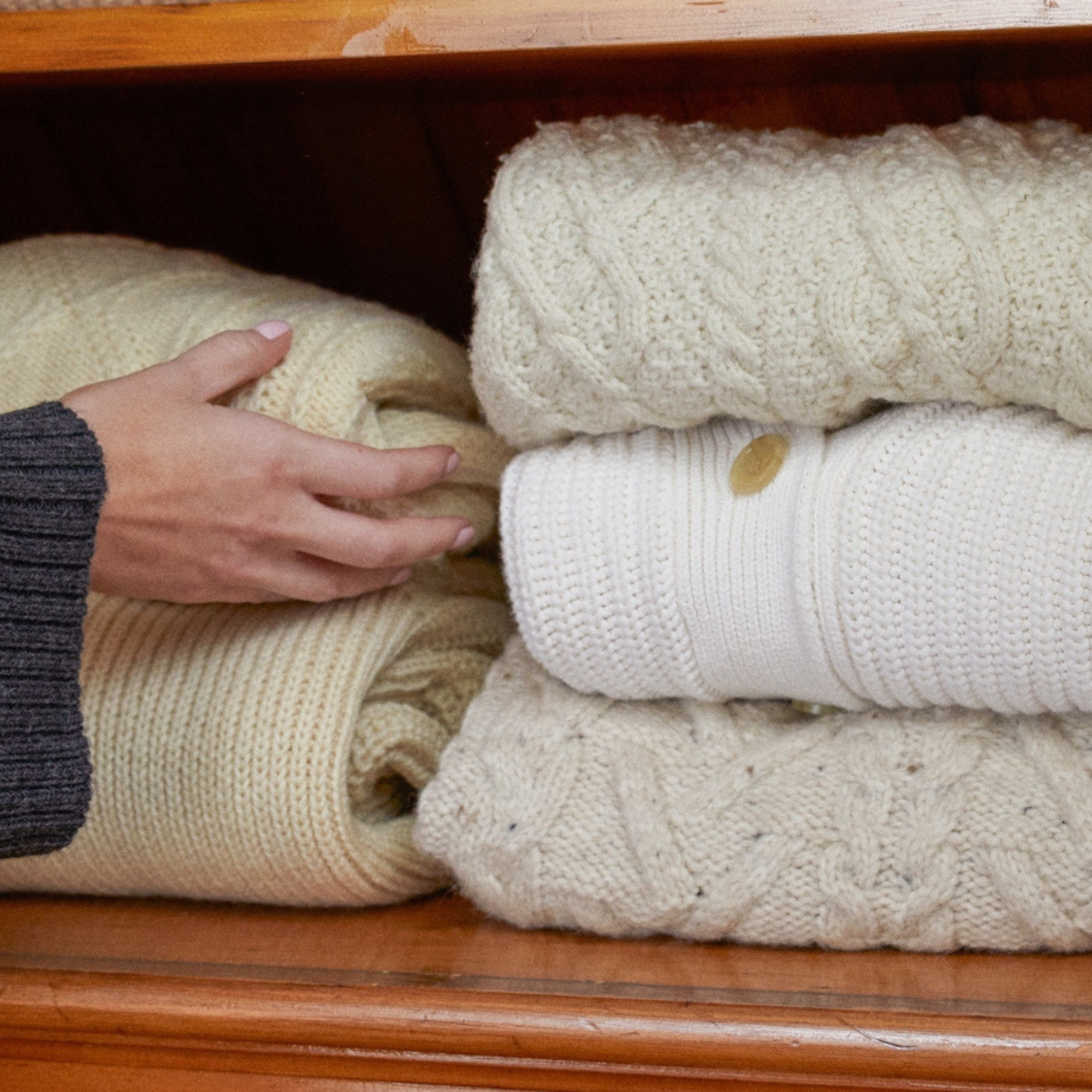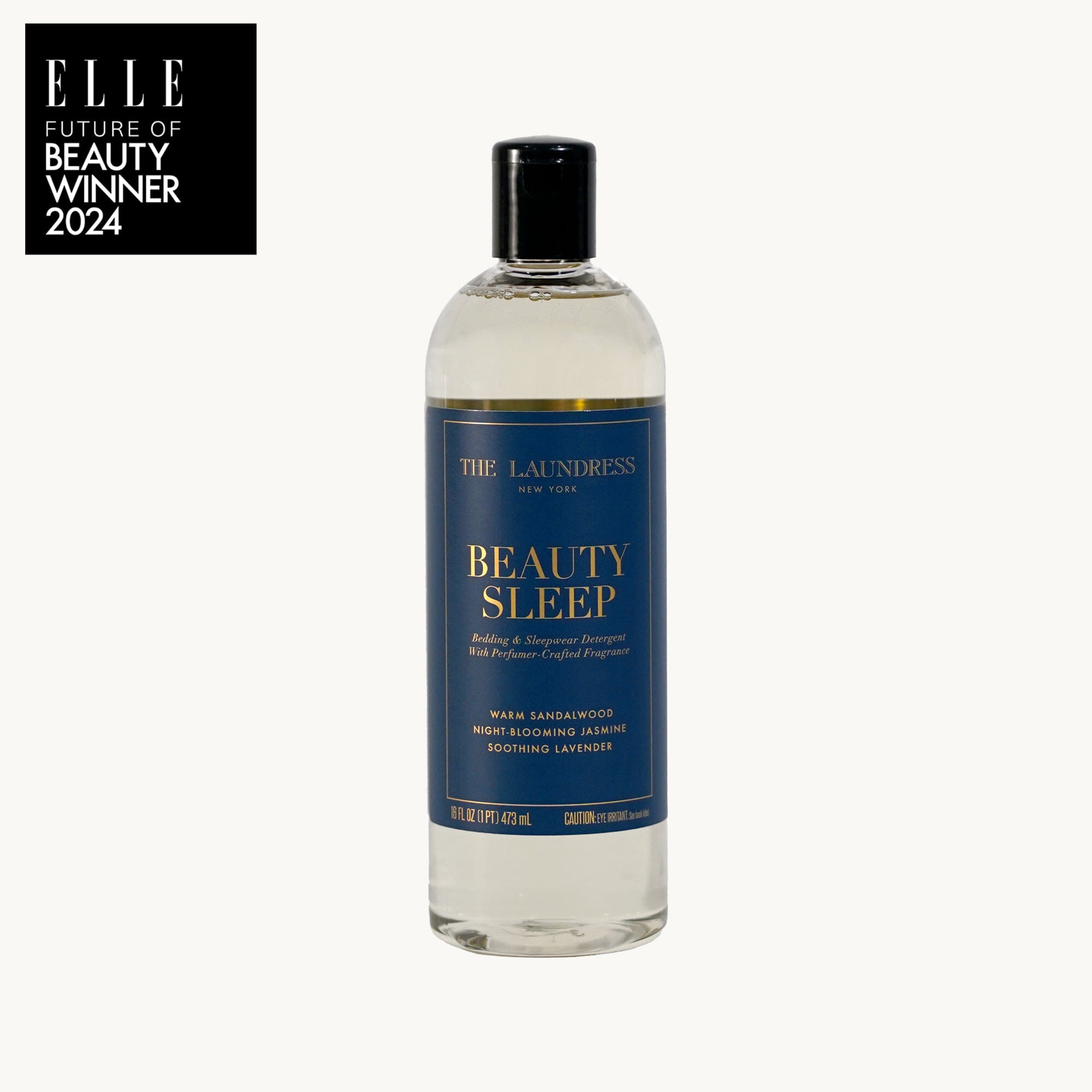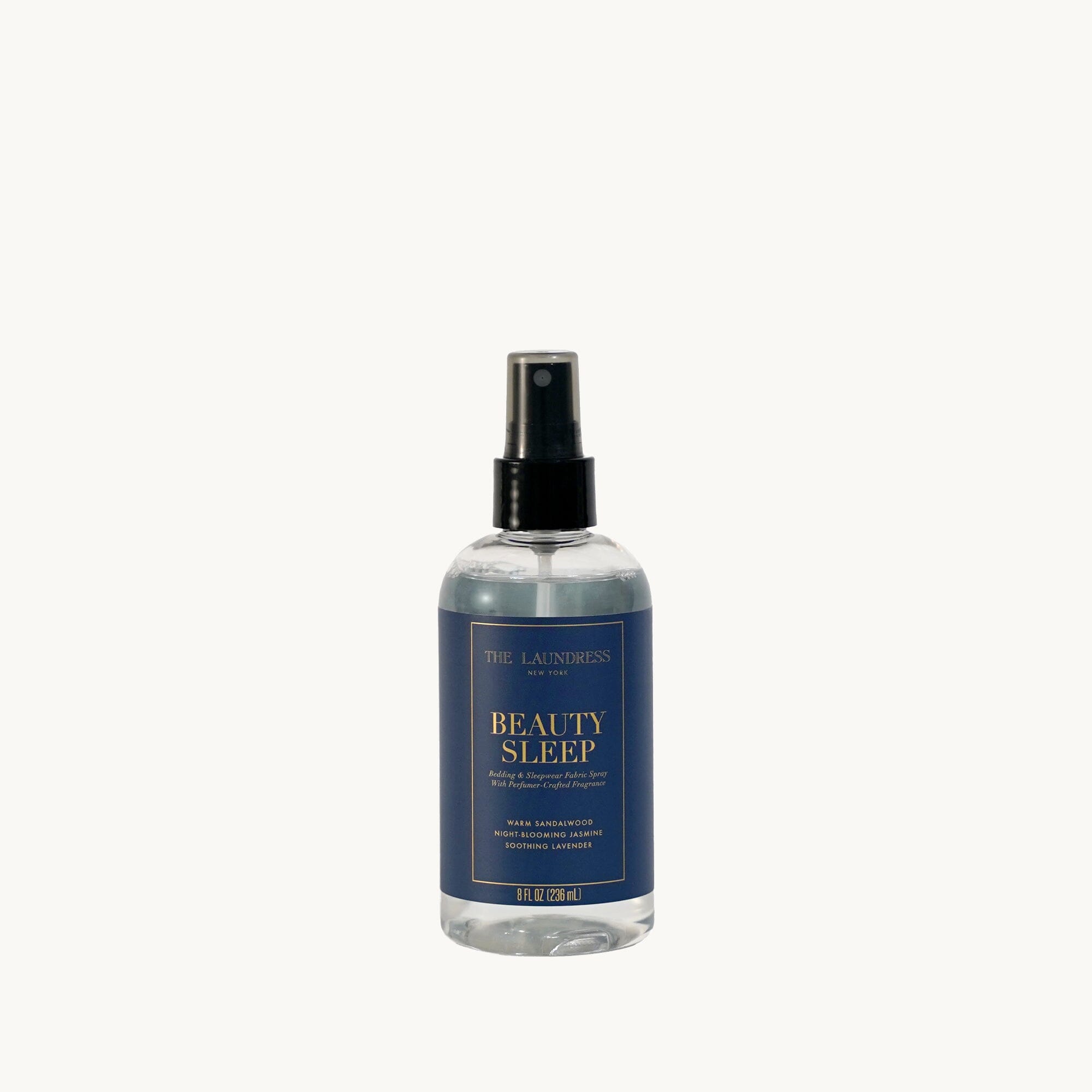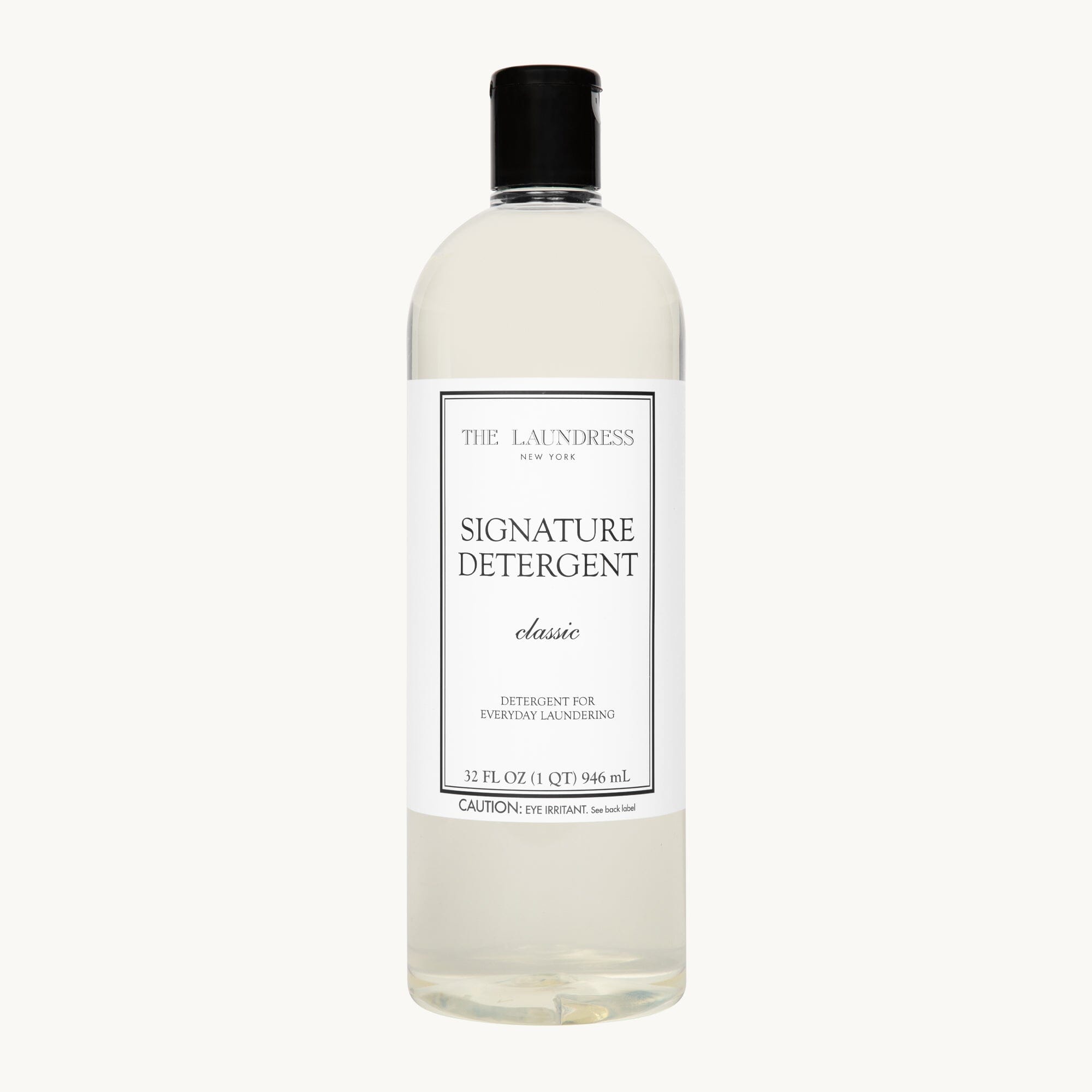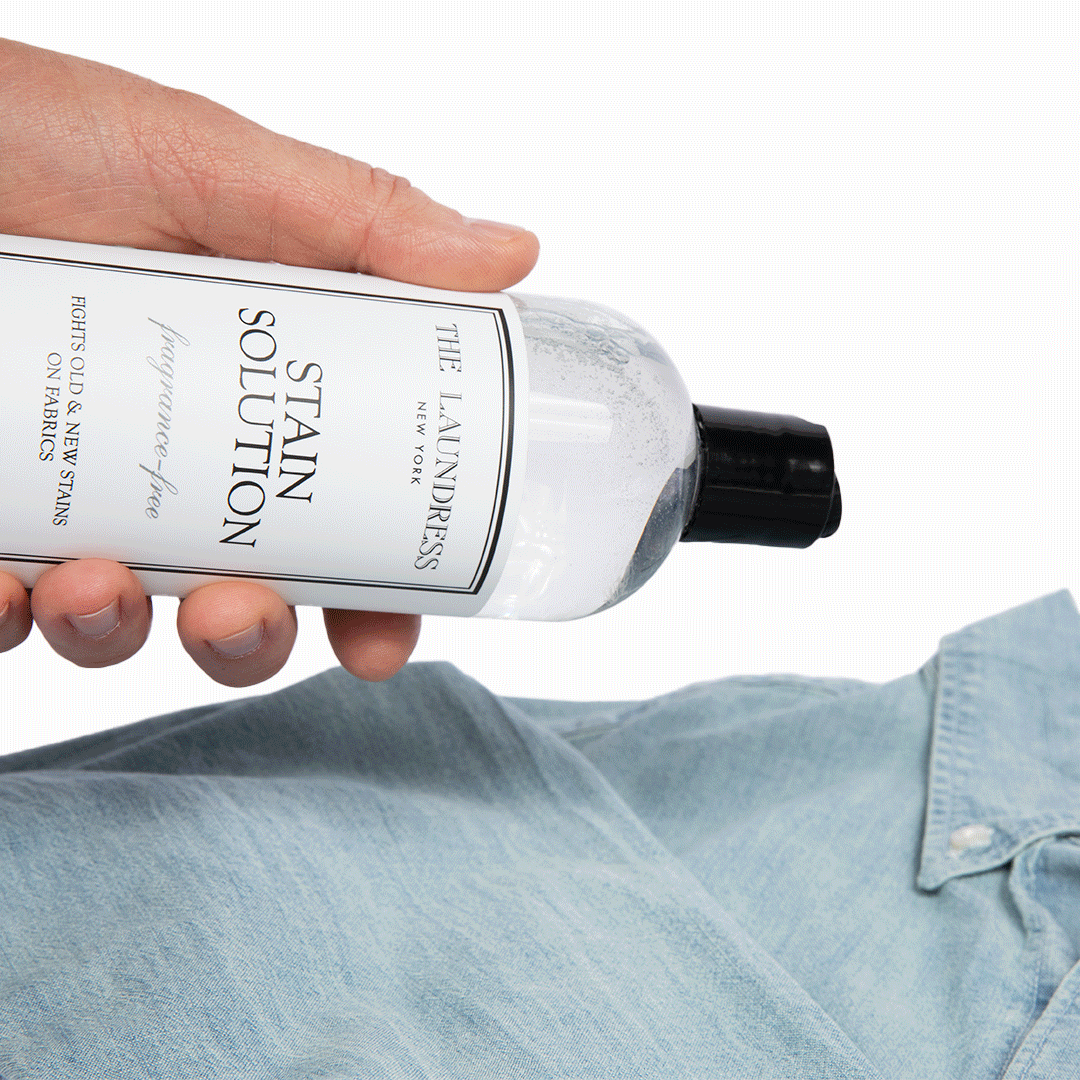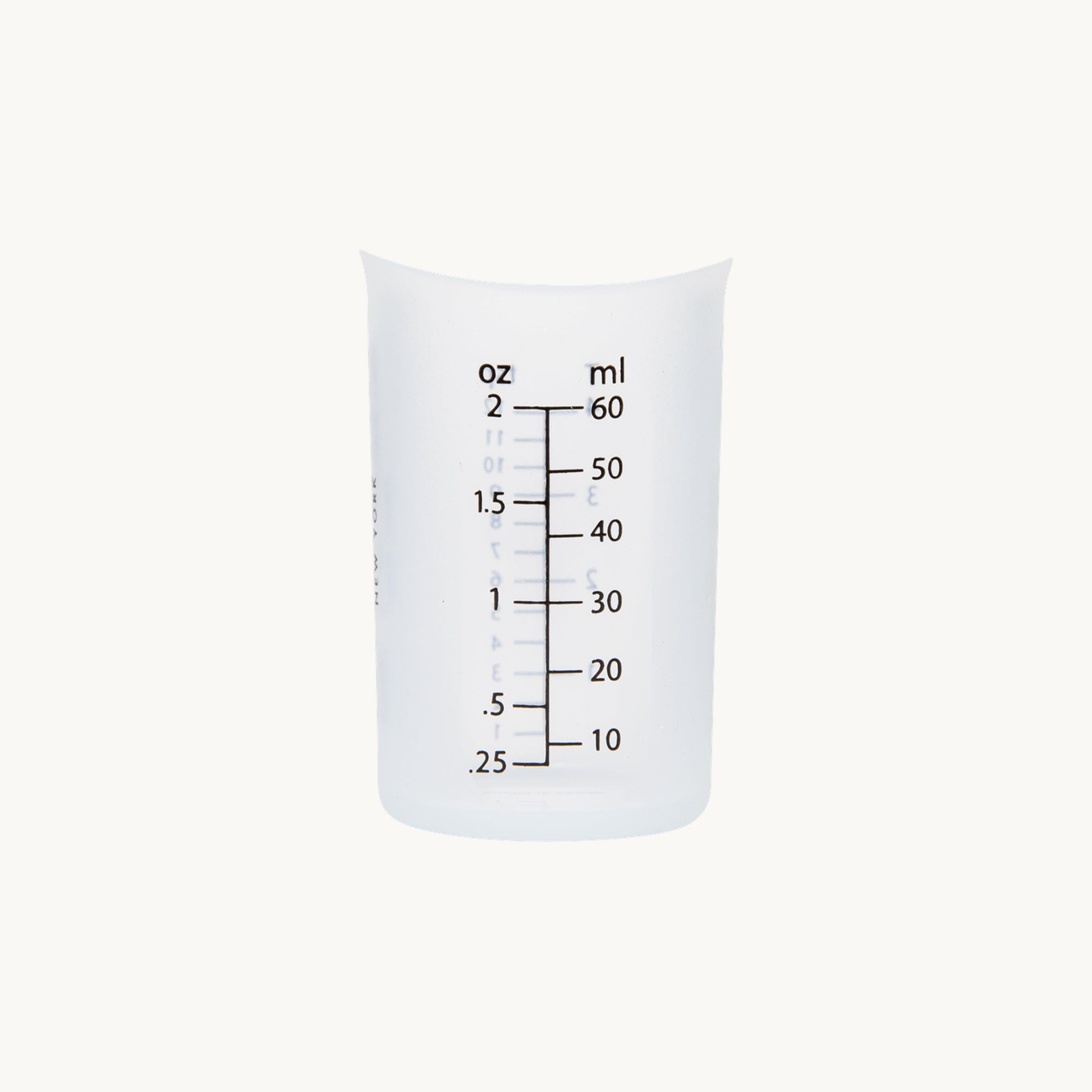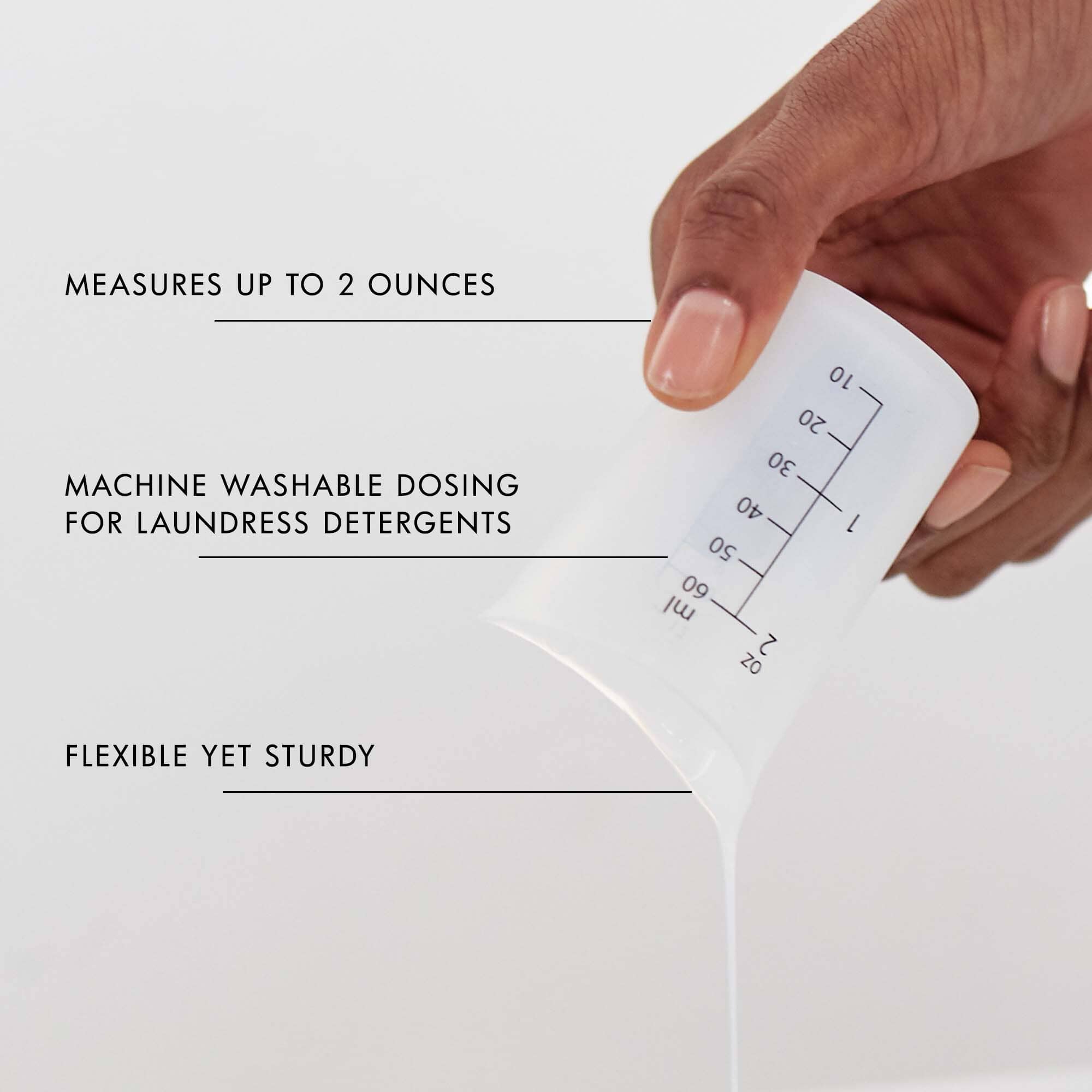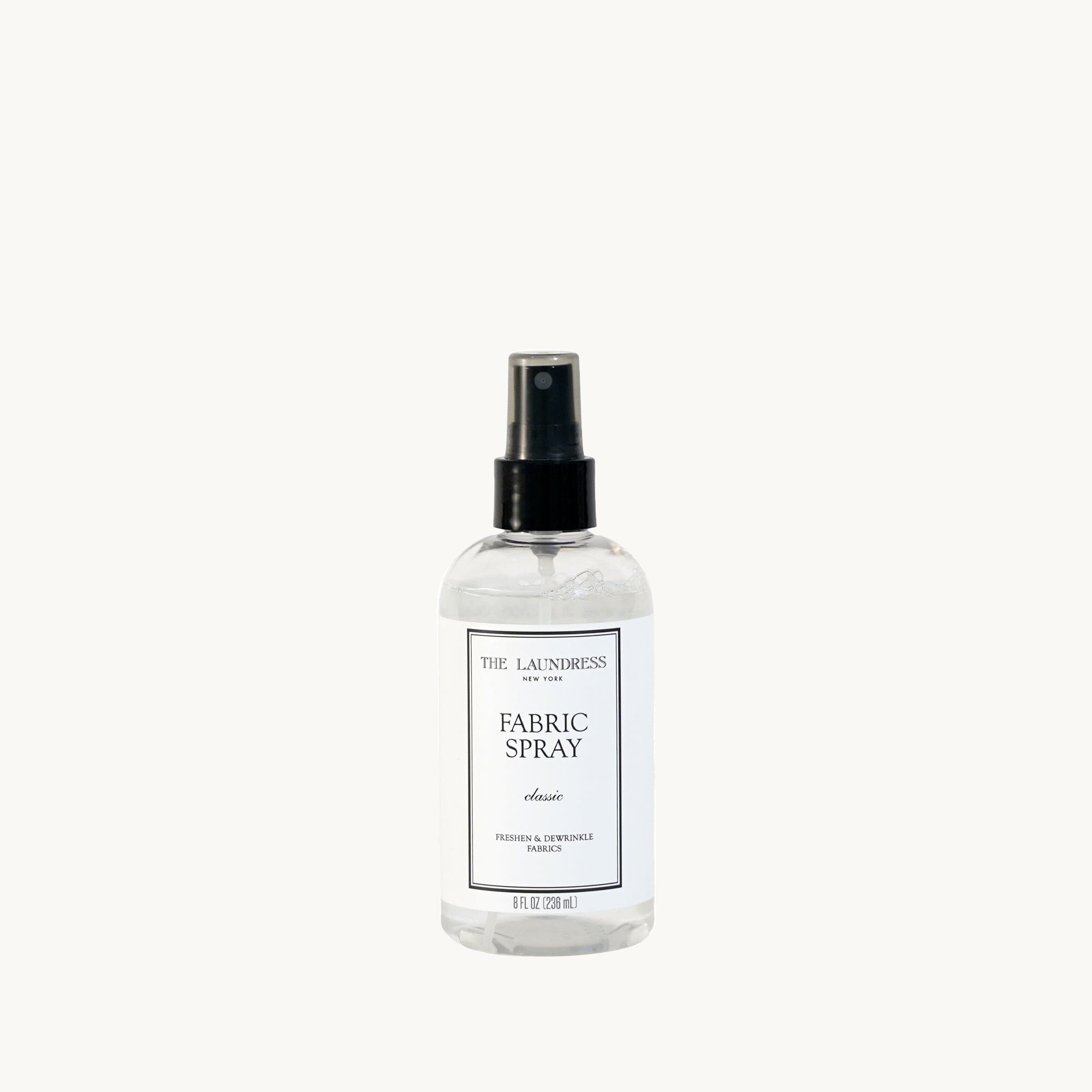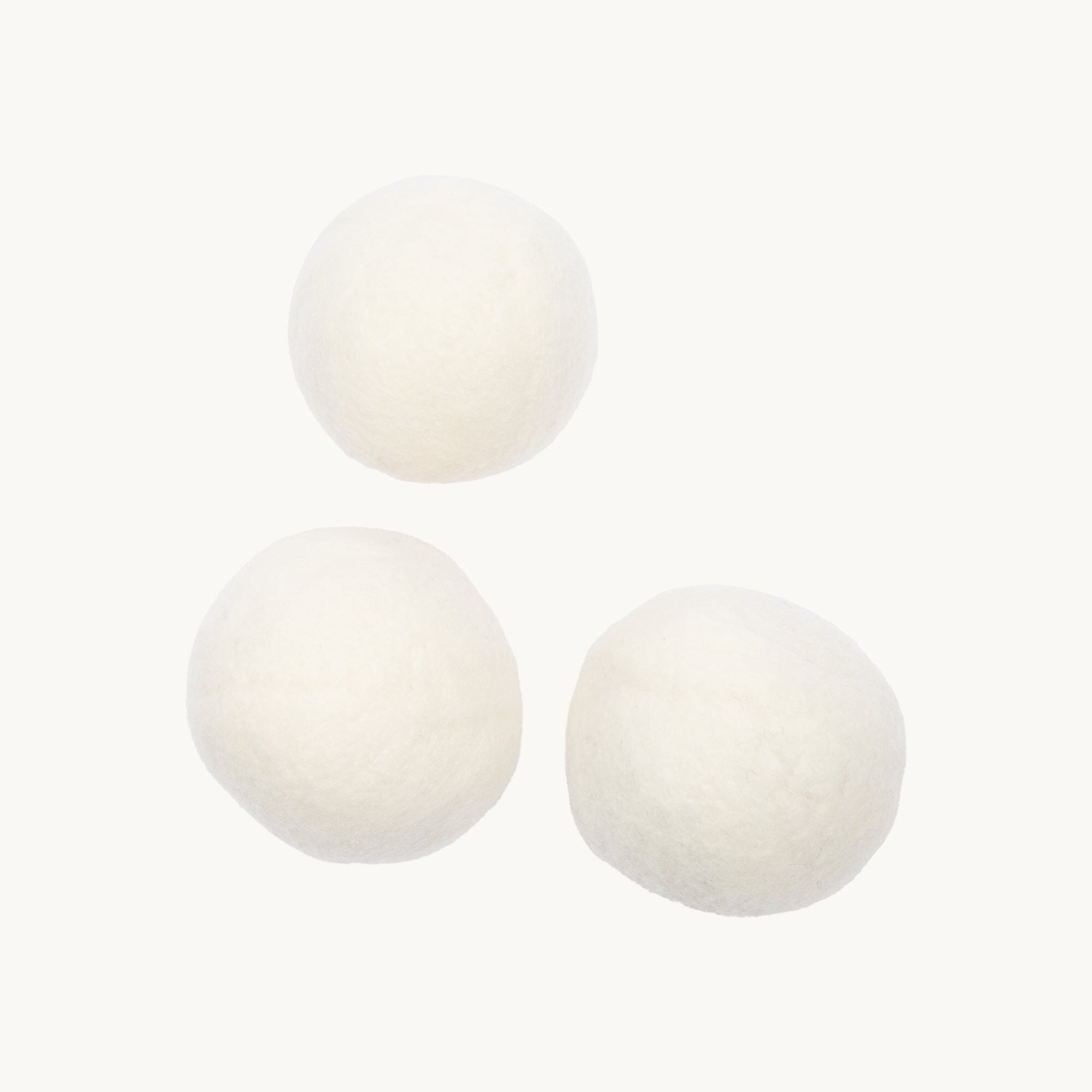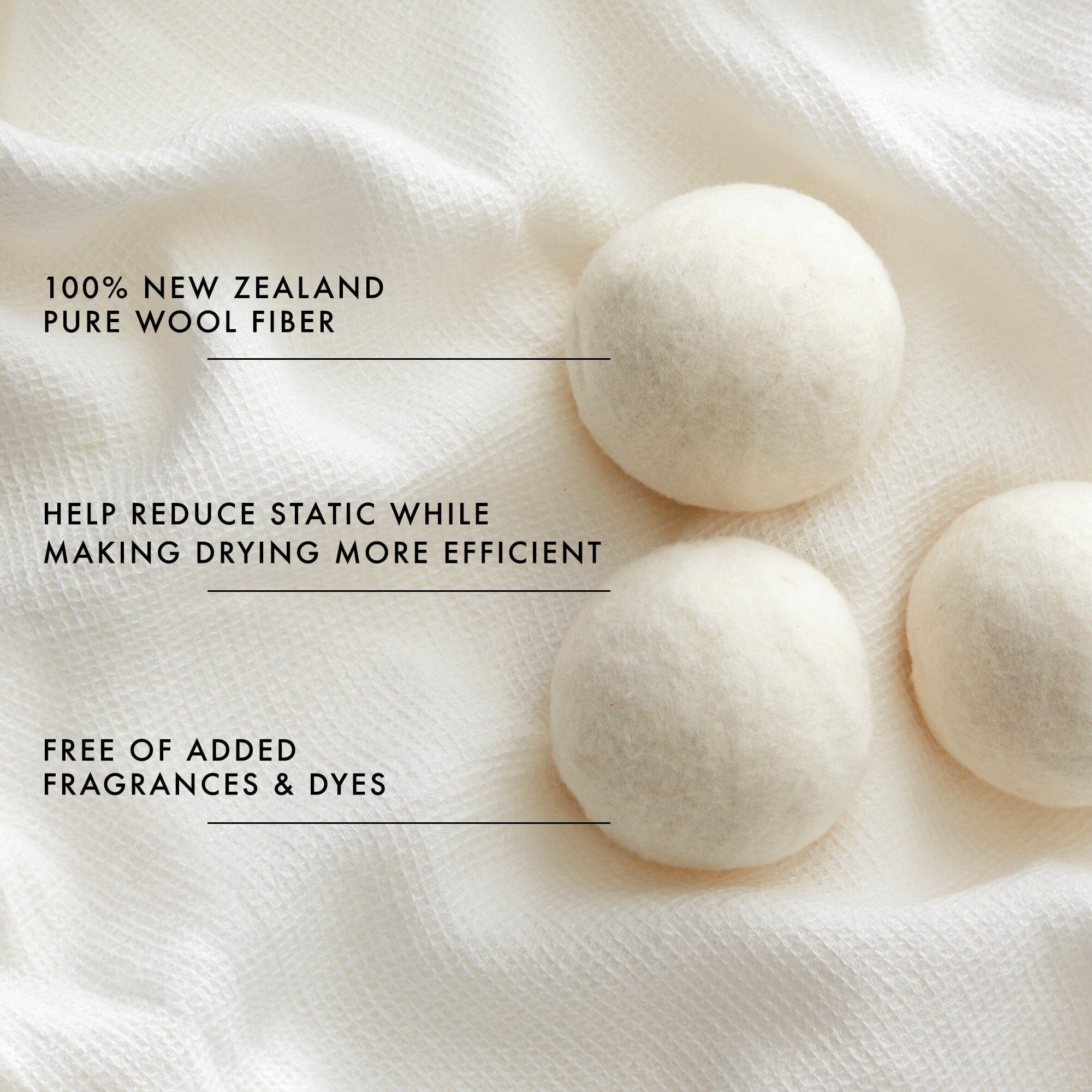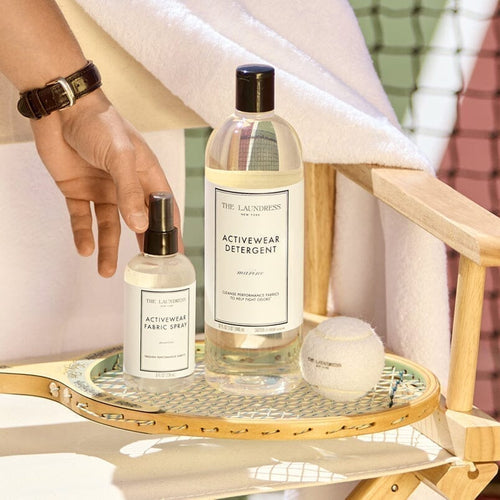
Check Tags & Water Test
Silk is a gorgeous indulgence. It also is one of the fabrics we get the most questions about at The Laundress. How can I wash silk? Can silk be handwashed? Does silk HAVE to be dry cleaned? Is silk prone to stains?
It is possible to wash silk at home with the right solutions. Before you get started, it's important to properly check tags and test your item if needed before washing!
While silk can absolutely be washed with the right tools and moves, sometimes the dyes used in this fabric are often not stable enough to wash. Silk can also have a finish that may be removed with washing; for example, a smooth finish may become pebbled. If your item is tagged "dry clean only", don't attempt to wash it at home. Items tagged "handwash" or "dry clean" can often be laundered at home with the right methods and gentle solutions. Before washing, always perform a water test to ensure best results.
To test for color bleeding, find an inconspicuous area on the item, such as a hem, and dip it in tepid water. If dye releases into the water, you'll know that bleeding would occur if washed. If you discover that an item bleeds during the test, simply take your delicates to the dry cleaners. Or, if the garment is a solid color, wash it alone. It's also important to note that some smooth finishes may be textured after washing, and can be steamed gently to achieve a smooth finish.
Sort It Out
After testing, sort your silk pieces by color and type. If you noticed excess dye release when completing your water test, it's best to hand wash your item on its own to reduce color loss. We like using a separate hand wash basin for silk, to avoid transferring residue from any leftover cleaning or personal care products that might be lingering in your sink.
Always hand wash silk pieces with embellishment, like special buttons, beading, or zippers. For silk blends, like a silk and cashmere sweater, wash alone or with similar items (like a load of delicate knits).


Hand or Machine Wash
Handwashing is always the best and safest method for washing silk, especially items with embellishment. However, some more "everyday" silk items, like a silk pillowcase, can be machine washed on a delicate setting.
To hand wash silk add Delicate Wash to a tub or sink filled with cool water. Submerge the item and gently agitate the water with your hands to evenly distribute soap. Soak for up to 30 minutes, then rinse well by running cool water through the item until the water is no longer soapy. Do not wring. Instead, press the water out of the item.
To machine was silk, add Delicate Wash to the machine dispenser and select a cold, delicate cycle with low spin. Always place your item inside out in a Mesh Bag before laundering to add protection in the machine. Remove promptly from the machine after the cycle is finished to air dry.
Lay the item flat in its natural shape on a drying rack or hang to dry. Never, ever put silk in the dryer, even if it says machine dry "no heat" on the tag. Silk will never regain the same finish after tumble drying.
Most silk items will be wrinkled after laundering - this is normal. Gently smooth the fabric out with your hands before letting air dry. We recommend steaming to remove wrinkles and rejuvenate the natural luster after washing.
If ironing, use the lowest temperature setting and iron on the wrong side of the fabric (with the garment inside out). A pressing cloth between the iron and item will add the most protection.


A silk item such as a skirt or dress can be hung on a hanger; however, be mindful of clips because they can leave marks on the material. Smaller silk pieces like scarves can be hung, or left folded in acid-free tissue paper. Always store items clean.
We recommend storing in a breathable cotton bag to add a layer of protection. Storing in plastic encourages yellowing and can trap mildew-causing moisture, a prime environment for bugs.
When it's time to wear your silken favorites, these items can be spritzed with Delicate Fabric Spray to remove wrinkles and freshen their scents after storage.
We always recommend testing delicate fabrics in an inconspicuous spot for color bleeding and water reactions before laundering. Not all garments perform and react as textile science would predict.
Shop The Story
Detergent For Everyday Laundering
Fights Old & New Stains On Fabrics
Aid Stain Removal
Dosing For Fabric Care
Dewrinkle Fabrics & Clean Laundry Scent
Fluff & Reduce Static During Drying











